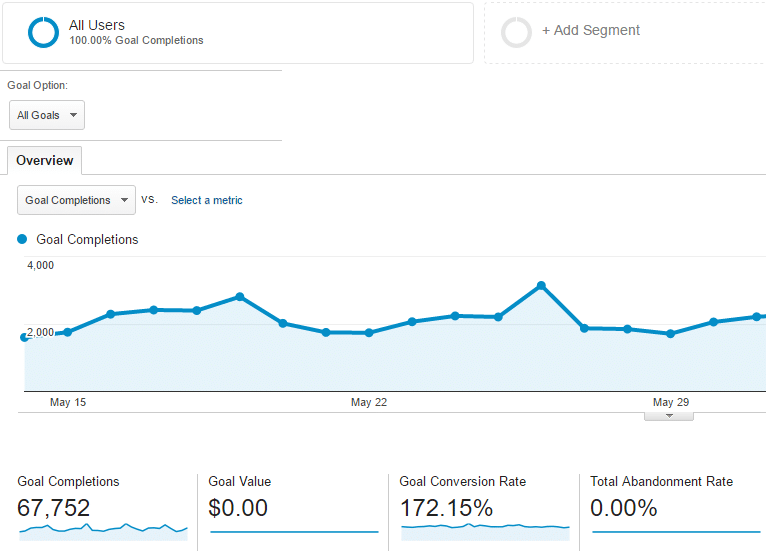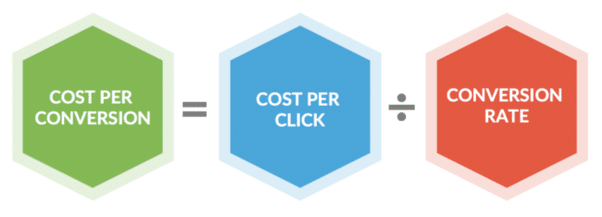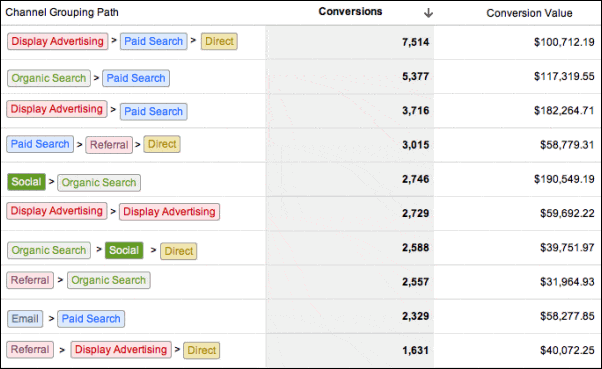The days of relying on a single metric to track and measure the success of your ecommerce SEO strategies are long gone. There is no one-size-fits-all approach for tracking KPIs – every business has different needs. In this blog post, we will discuss 11 eCommerce metrics that you should be tracking if you want to see real growth in your ecommerce company!
Conversion Rate

How many visitors on your website are completing a conversion and turning into customers? If you want to know how successful the traffic coming to your site is, then this metric is essential. You need to figure out what percentage of organic or paid search visitors end up converting with your business – so it’s an important factor in ecommerce metrics for ecommerce marketers and company executives alike!
Cost per Click (CPC)
When running any kind of PPC campaign, one way that companies can monitor their success in getting clicks is through cost per click metrics. These numbers show advertisers how much they’re paying each time someone clicks on their ad from a particular keyword/keyword phrase. While there are a variety of factors that determine how well your ads will perform, you can control the maximum cost-per-click for each keyword or display ad placement. Here’s a list of things you can handle in CPC:
- The maximum cost-per-click you are willing to spend to get a visitor to your website
- When or where your advert appears
- Which format your ad appears in (text, banner, video, shopping listing, etc.) and it’s content
- Which page of your website the advert will take people towards (the landing page)
- The cost of your products or services on the website (the perceived cost depending on quality and/or service)
- How the website works, looks and interacts with the visitors (how the website converts)
Cost per Conversion (CPA)
This core essential in eCommerce metrics is the cost incurred by a company for each conversion, which can be likened to what’s known as return on investment or ROI, in other words how many times does your advertisement need to be clicked before it pays off? The average CPA floats between $60 and $90 depending on industry and advertising channel but typically falls in the range of four out of ten paid clicks costing about $30-$50 dollars each time someone converts.

Average Order Value
A good way for ecommerce marketers who are looking at their long term ecommerce marketing goals – especially if they’re trying to develop certain customer segments that have different purchase habits than others . Assessing the purchase habits of a segment will help you understand what they want to see or experience from your company.
Average Click Through Rate
CTR or click through rate in eCommerce Metrics is the number of clicks on an advertisement divided by the total amount of impressions that ad received – so it’s a good way for ecommerce marketers who are looking at their short term marketing goals, especially if they’re trying to increase conversion rates and grow sales quickly .
Bounce Rates
A bounce rate tells us how many single page visits a person has before leaving our site without browsing any further and if the success of your site depends on repeat visitors, you’ll want to pay attention. Bounce rates can be lower if your site is simply giving information or even entertaining but they’re often higher in the context of ecommerce.

Ecommerce Website Traffic Sources
The three main traffic sources are direct, referral, and search. Direct visits can be due to your website being linked from another site or through a bookmark on someone’s desktop computer but it is hard for you to control these types of visitors because they come in without any intentionality behind them.
Referral traffic occurs when someone clicks the “share” button under one of their social media posts that directs people to visit your website so this type of visitor tends not only stay longer than an average person during each session but also converts at rates comparable with email campaigns as well! Finally there are those who found your business after doing some online searching which makes up about 50%+ of all web browsing activity worldwide–this means if no other information was provided
What are the most popular ways that people find out about what you have to offer? Understanding which channels drive traffic will help guide marketing efforts more effectively and form an inteegral part of your eCommerce metrics dashboard.
Unique Visitor Count
One thing we’ve learned from Amazon over time is that all shoppers aren’t created equal. There are engaged shoppers, and then there are those who make a single purchase and never come back. Understanding your unique visitor count will help you identify the types of shoppers that visit most often. Integrating Unique visitor count in your eCommerce metrics data is highly essential for Data and BI analysts tracking online shopping activity.
Customer Lifetime Value (CLV)
There’s no better indicator for ROI than CLV – or what someone spends with you in total across many different orders compared against just one order from another merchant. In general, we see lower margins and higher volume coming from high value customers.
Assisted Organic conversions
Assisted organic conversions are Google’s measure of any interaction, other than the final click , that leads to a conversion. Google Analytics’ Multichannel Funnel is an analytics tool that allows marketers to visualize the conversion path of their marketing strategy.

While some may think this only includes information about a site’s landing page, others might find out by using assisted conversions data they can also see which channels were most effective in converting customers and how sites work together to make up for missed opportunities at other points along the customer journey.The assisted conversions view will give you a better idea of all of the conversion in your organic traffic and how well SEO efforts are paying off.See exactly what’s converted, as well as revenue generated by these conversions!
Number of Non branded keywords
From optimizing for branded and non-branded keywords to general SEO, tracking data is a crucial part of any online strategy. Tracking the number of monthly searches on your brand name against other variations can be done in many ways but it’s best to use an analytics tool like SEMrush or Google Analytics to track non branded keyword performance across channels (e.g., organic search vs PPC ads).
Fluctuations in keyword rankings
Ranking fluctuations over time can be one of the most frustrating obstacles for any eCommerce Marketing Plan. However, understanding exactly how you rank in individual SERPs (search engine result pages) and having a strategy to maintain rankings is crucial. Track monthly keyword rankings on Google, Yahoo! Search Marketing or Bing using an analytics tool like SEMrush or Incisive Media’s Site Explorer.

Number of page impressions
Page impressions are calculated by adding up all clicks on your site(s) from various sources – organic search results, direct visits etc., across different screens such as desktops, laptops, tablets and mobile phones. Tracking this metric will help identify which devices drive more traffic to your site with accurate data so that you can target them accordingly
Core web Vitals
Google Webmaster Tools is a great place to monitor your site’s page load time, crawl errors and other core web vitals such as indexing status. Knowing these stats will help you be aware of any issues that are occurring with your site so that they can be addressed. The ideal measurements are as follows from Google:
- Largest Contentful Paint (LCP): measures loading performance and should occur within 2.5 seconds of when a page first starts to load;
- First Input Delay (FID) measure interactivity, with 100 milliseconds being the desired goal time frame
- CLS measures the formatting changes to a webpage after the initial rendering in a browser

Indexation Status
Important for all sites but especially eCommerce stores – if the search engines cannot find pages on your website it won’t show up in their results.Google’s robots are constantly crawling the web looking for new pages to index and rank in their results. If it can’t find anything on your site, you’re going to have trouble showing up anywhere but at the bottom of page one!
Search Analytics
This metric shows how often a keyword or phrase was mentioned in search engine queries related to one’s business. Tracking this data through tools like SEMrush helps identify which keywords should receive more attention from an SEO perspective by analyzing monthly rankings, traffic volume and competition level
Return on investment
If you think about your time as an investment, then it’s worth something. Imagine the following scenario: You’re a member of a team and have been working on this project for 10 days now. Your teammates are contributing their labor at rates $50/hr, $60/hr or even more to produce results that benefit everyone involved in the company–not just them individually. When calculating how much each person has invested into this endeavor, make sure to multiply their own hourly rate by hours worked so far (or remaining) if they haven’t yet finished all work assigned during these past few weeks.
If you are paying a team to execute SEO for you, that will be part of your investment. However, the price of tools as well as collateral should also be calculated and included in any calculations. Additionally, the cost or goods sold is an important line item when figuring ROI because it can impact profits tremendously if not accounted for beforehand! Once all these factors have been taken into account – along with revenue from sales- divide this by your total invesment figure so see how much profit has accrued over time due to marketing efforts through investments.
Number of keyword searches in Google AdWords
Remembering keywords can be tough for many people. When you use your own product name as a search term on Google, there’s an opportunity to see what phrases are being searched most often with those words. You might then find new ways to optimize your site content around these popular topics!
Product Engagement
The key to increased conversions is product engagement. Engagement rates correlate with bounce rate, which means more time spent on site equals less shopping cart abandonment – good news for your business! Product engagement can be measured by looking at the number of actions per visitor and calculating an “engagement score.”
In order to increase conversion rates in a digital commerce environment it’s important that you focus not just on click-throughs or impressions but also look deeper into the amount of meaningful interaction your visitors have with products. Tracking engagements gives insight as to what customers value about certain items so that they are able spend their valuable time viewing higher converting pages instead
If you want to be successful in ecommerce, you need a solid strategy in measuring ecommerce metrics. It’s not enough for your business just to exist on the internet: it needs people and search engines alike if it wants any chance at success. Track concrete KPIs that will help gauge the effectiveness of your strategies going forward with an eye towards SEO (search engine optimization) so that more people can find out about what makes this store different from all others!


